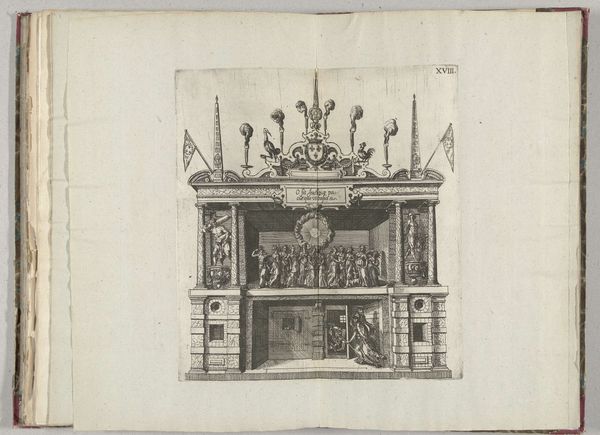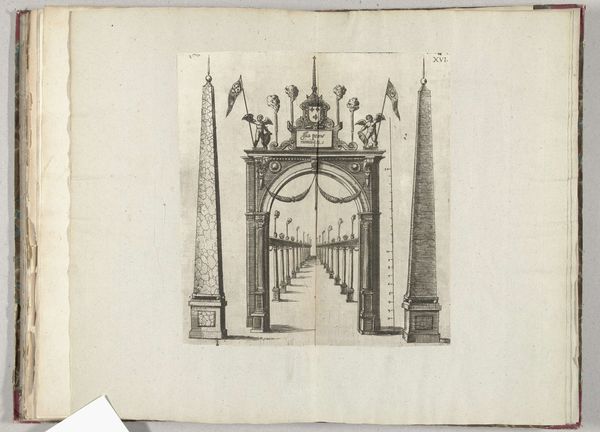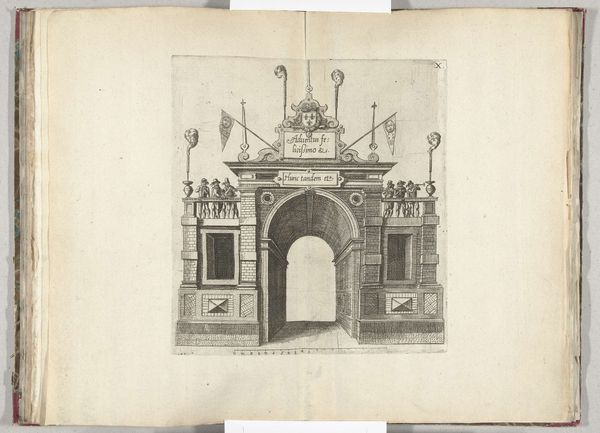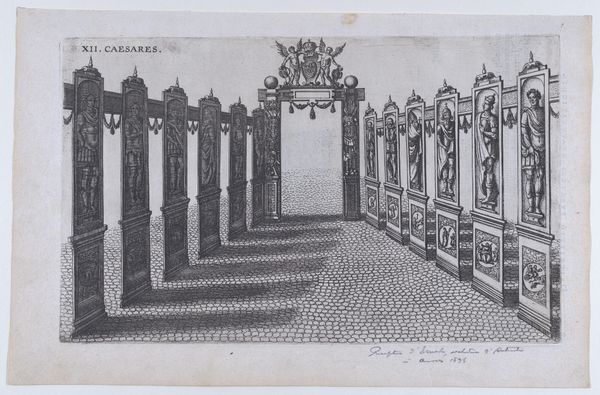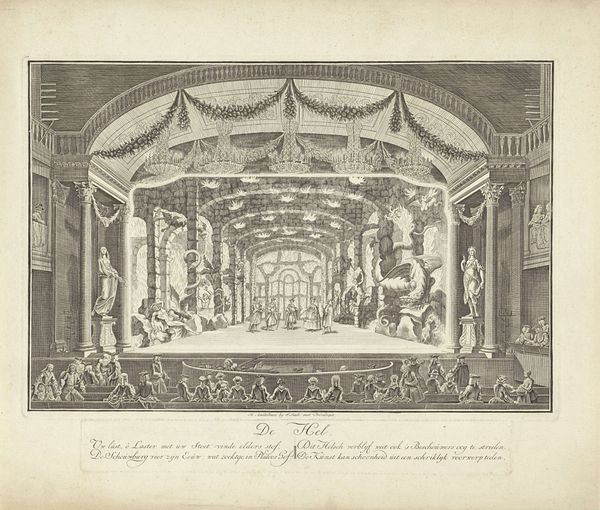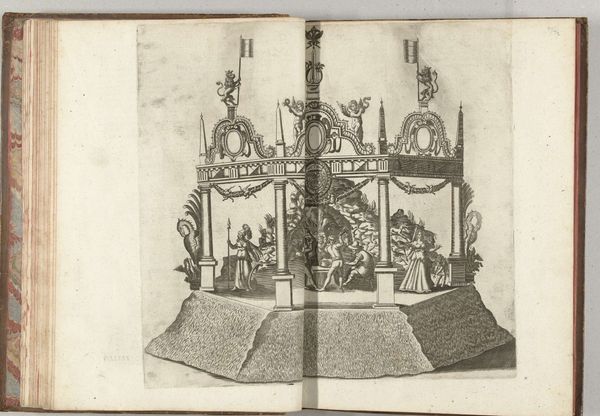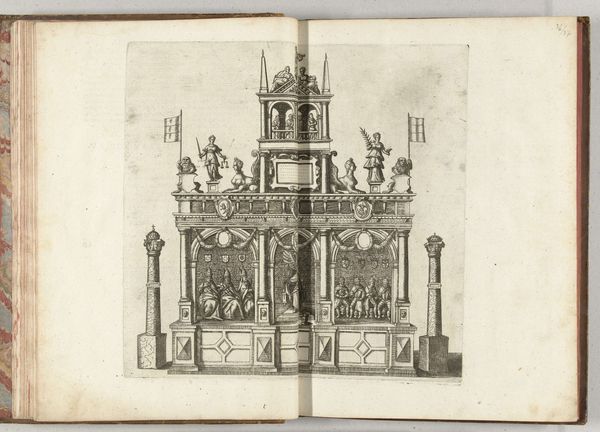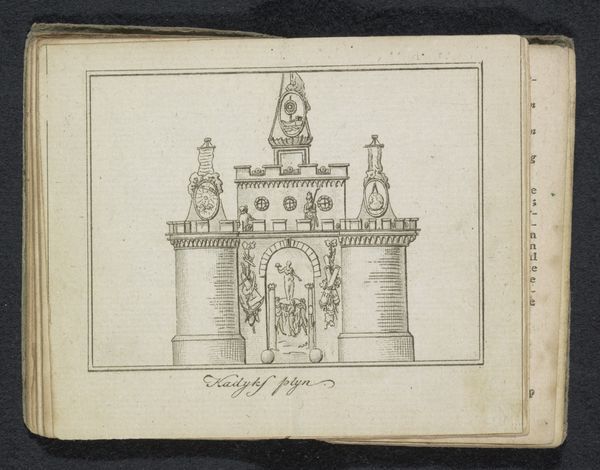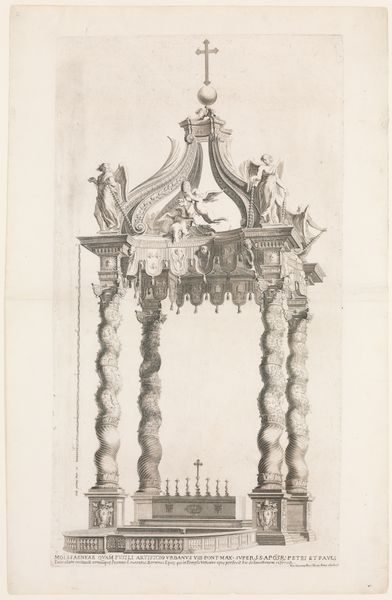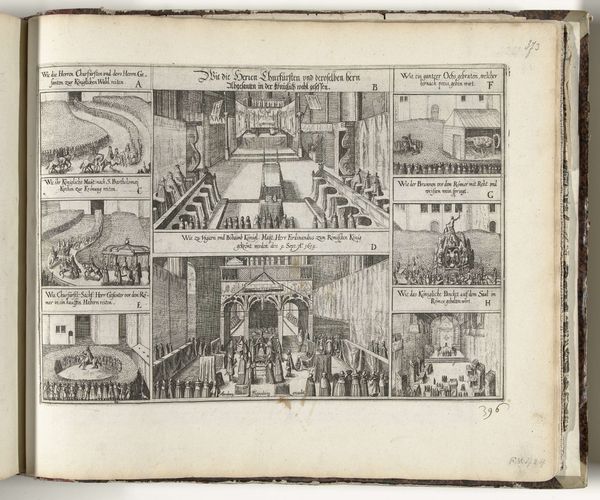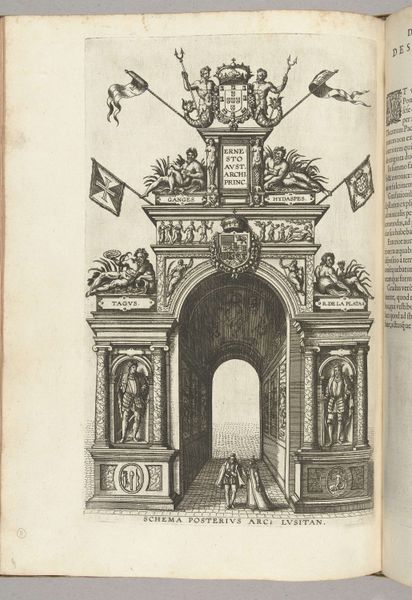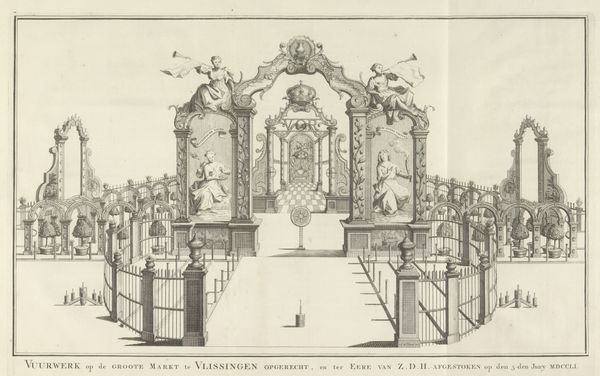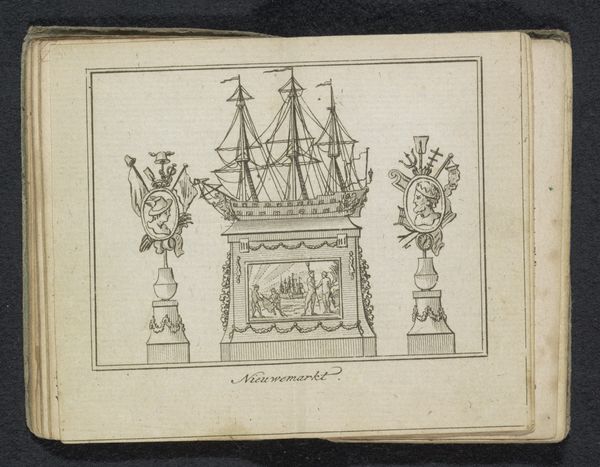
drawing, print, paper, engraving, architecture
#
drawing
# print
#
paper
#
11_renaissance
#
cityscape
#
northern-renaissance
#
engraving
#
architecture
Dimensions: height 282 mm, width 267 mm
Copyright: Rijks Museum: Open Domain
Curator: Here we have an engraving from 1582, "Erepoort opgericht op de plek van de oude Sint Janspoort," or, "Arch of Honor Erected at the Site of the Old Saint John’s Gate." Editor: Whoa, heavy Renaissance vibes here! It's got that crisp, clean look of an architectural drawing. Gives off a ceremonial, "trumpets-blaring" kind of feeling, doesn’t it? Curator: Absolutely! It's an illustration of a temporary structure, an arch, made for a ceremonial entry. The materials used for this kind of structures at the time – wood, canvas, plaster – are very relevant to understand this genre of ephemeral art made for civic celebrations. What do you think of this temporality? Editor: Hmmm. Fleeting, and a little melancholy. So much work, such craftsmanship...just for a moment? Reminds me of building sandcastles as a kid, knowing the tide's coming in. A kind of defiance, isn’t it? Building beauty, even though it fades. Curator: Well, it speaks to the socio-political function of art during the Renaissance. This kind of printed images documented events for a broader audience. Beyond mere aesthetics, we see an insight into civic pride, social status, and the way power was performed in urban environments. Editor: And literally *performed,* too. I can almost hear the crowd, see the banners waving, imagine the important people strolling beneath. Is that a coat-of-arms on top? I bet it smelled of incense and fancy perfume. I wander, who decided *this* gate was to have this special moment? Curator: Most likely a decision from city officials or a guild celebrating a ruler's visit or a significant event, a demonstration of loyalty. Also, the very act of erecting such a structure provided work for carpenters, painters, sculptors... a clear example of art intertwining with urban economics. Editor: Right! Who profits, who labors, and what message gets amplified—always the interesting questions. Gives me a lot to consider beyond just the fancy garlands and the pretty arches, makes me think about who built the gate and if *they* felt it to be beautiful too. Curator: Precisely. It all connects. Hopefully this inspires our listeners to explore the links between artistry, urban spaces, and civic life back in the 16th century!
Comments
No comments
Be the first to comment and join the conversation on the ultimate creative platform.
